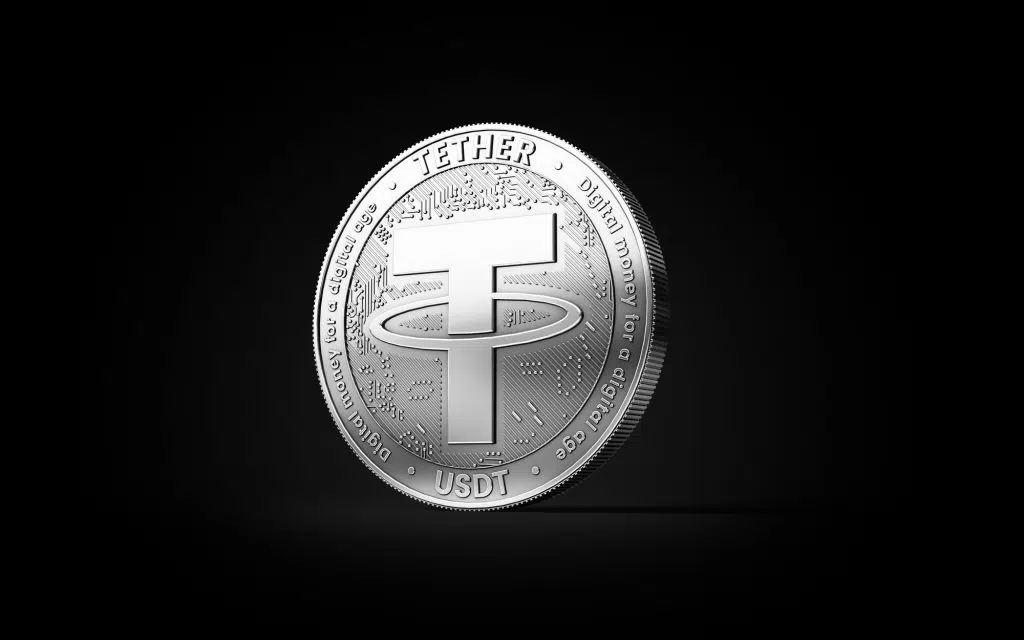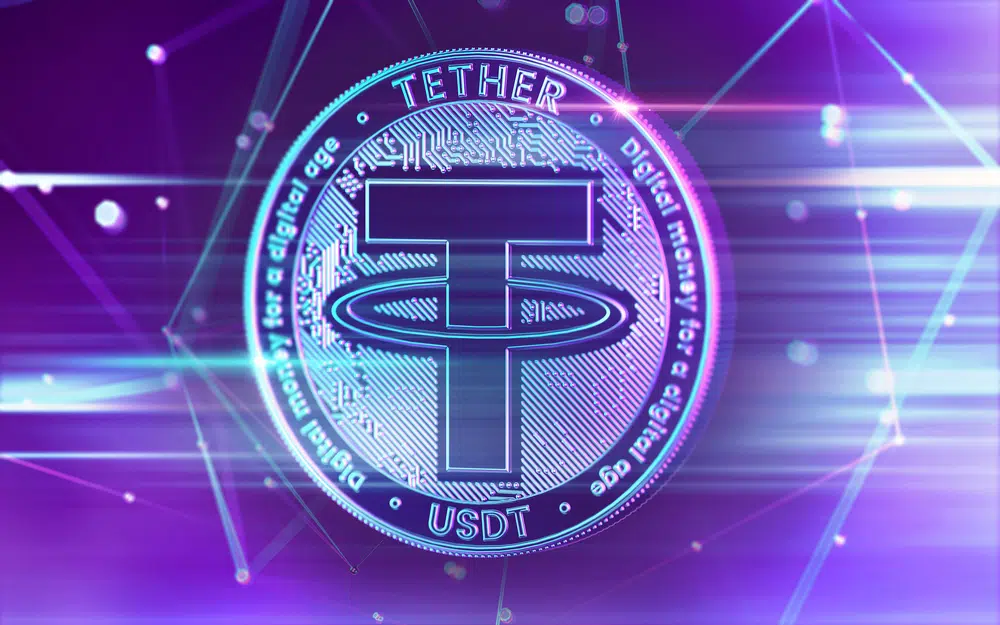Contents
Cryptocurrency is an ever-evolving asset class that offers investors a wide range of options when looking to diversify their portfolios. Two of the most popular digital currencies are USDT and USDC, both of which are fiat-backed stablecoins. The US dollar is the world’s most popular currency, but digital versions of the dollar have been gaining traction in recent years.
USDT and USDC are two of the most popular digital dollar coins currently in circulation.
These two coins offer different benefits and drawbacks, and it’s important to understand which one is right for you before investing. In this blog post, we will compare USDT and USDC and discuss the pros and cons of each.
The brand new newsletter with insights, market analysis and daily opportunities.
Let’s grow together!
USDC vs. USDT: Which stablecoin is better for you?
In the world of cryptocurrency, there are a variety of stablecoins that can be used to store and transact value. Two of the most popular stablecoins are USDT and USDC. While both are designed to serve as a reliable store of value, there are important differences between them.
USDC is a US dollar-backed stablecoin, meaning it is backed by US dollars held in reserve. USDC is fully collateralized, meaning it is backed 1:1 by US dollars held in reserve.
This makes USDC a more secure and reliable choice for those looking for a reliable store of value. USDC is also regulated by US financial authorities, meaning it is subject to strict oversight and compliance.
USDC is available on many major exchanges and wallets, making it easier to transact with USDC. Additionally, USDC is supported by multiple major financial institutions, including Goldman Sachs and Circle.
USDT is a dollar-pegged cryptocurrency, meaning it is not backed by any physical currency. USDT is not as reliable or secure as USDC, and it is not subject to the same regulatory oversight.
Ultimately, when choosing between USDT and USDC, it is important to consider the differences between them. USDC is a more secure and reliable option, and it is backed by US dollars and supported by major financial institutions.
USDC provides users with a more secure and transparent way to send, receive, and store value. It has a faster transaction speed and lower fees than USDT, making it more attractive for those seeking a reliable and safe form of digital currency.
However, USDT is more widely accepted and is available in more countries, but also carries more risk. For users who want the flexibility of a cryptocurrency that is not subject to regulation and provides a certain level of anonymity, USDT may be more attractive.
Ultimately, the choice of which stablecoin to use will depend on the individual’s needs, preferences, and risk tolerance.
Both USDT and USDC offer advantages and disadvantages, making it important to research each option to determine the best fit. USDC is preferred by those who want more transparency, as it is regulated and backed by regulated financial institutions,
while USDT offers a higher degree of anonymity. Depending on the user’s use case, one of these two stablecoins may be the preferred choice.
Why are USD stablecoins popular?
In recent years, USD stablecoins have become increasingly popular as a means of storing and transferring value. USD stablecoins, such as USDT and USDC, are pegged to the US Dollar, a trusted, globally accepted currency.
By pegging their value to the US Dollar, these stablecoins offer a safe haven during times of economic volatility and provide stability in digital assets. USD stablecoins, such as USDT and USDC, offer a stable digital asset that can be used for trading, transfers, and international payments without the need to use fiat currency.
This is because USD Stablecoins are backed by the US dollar, providing a stable store of value and reducing the risk of volatility associated with other cryptocurrencies.
Additionally, USD Stablecoins are fast and easy to use, allowing for quick and secure transactions with low fees. This makes them ideal for international payments and transfers, which may be more cost-effective than traditional methods.
USD Stablecoins can also be used to hedge against market volatility, providing a reliable source of capital when needed. Overall, USD Stablecoins are a great option for those looking to take advantage of the benefits of cryptocurrencies without the risks associated with market volatility.
USD Stablecoins are fast, secure, and easy to use, making them an ideal choice for those looking for a reliable store of value. USDT and USDC have become popular due to their stability, low fees, and ability to be used as a medium of exchange. They are also backed by the US Dollar which provides users with added assurance that their funds are secure.
Moreover, USD Stablecoins are also an excellent way to hedge against market volatility since their value is tied to the US Dollar. As such, they can be used to transfer and store wealth without having to worry about market volatility.
USDT vs. USDC: comparing the two stablecoins
USDT is a stablecoin issued by a private company and is issued on the Ethereum blockchain as an ERC-20 token. It supports more exchanges than USDC but does not offer the same level of compliance and regulatory oversight. USDT is a centralized stablecoin, meaning it is backed by its issuer.
USDC, on the other hand, is issued by a consortium of companies and is issued on both Ethereum and Algorand blockchain as an ERC-20 and Algorand Standard Asset (ASA) token respectively.
USDC is based on an open network with transparent auditing, and is a decentralized stablecoin, meaning it is backed by an independent reserve of fiat currency. USDC offers a higher level of compliance and regulatory oversight than USDT.
Additionally, USDC is a fully collateralized stablecoin, meaning that each USDC token is backed by a U.S. dollar held in reserve. This means that holders of USDCs can be assured that their funds are safe and secure, as these USDCs are 100% backed by U.S. dollars.
USDT, on the other hand, is a centralized stablecoin issued by Tether, a private company. USDT is only issued on the Ethereum blockchain as an ERC-20 token and is not backed by fiat currency or other tangible assets.
Although USDT is a stablecoin, it is not fully collateralized, meaning that it is not backed 1-to-1 with U.S. dollars. This makes USDT a less reliable option than USDC, as there is no guarantee that Tether will be able to cover the value of all its USDT tokens.
In conclusion, both USDT and USDC offer different advantages and disadvantages, and traders and investors should carefully consider their options when choosing a stablecoin. USDT is more widely available, but may not offer the same level of compliance and regulatory oversight as USDC. USDC is based on an open network and is decentralized, but may not be available on as many exchanges as USDT.
What is USDT?
USDT is an abbreviated form of “Tether” and is a stablecoin that is pegged to the US dollar. It was created as a way to store and transfer value on the blockchain and is backed by real-world assets. USDT is a popular choice among traders and investors as it is a stablecoin that is traded on many exchanges. It is one of the most popular cryptocurrencies and is used by many traders as a hedge against market volatility.
USDT is not just a digital currency; it is also a blockchain platform that allows for the creation of smart contracts, token issuance, and decentralized applications. USDC is a digital asset created by Circle and Coinbase and is pegged to the US dollar. It is a stablecoin that is used to store and transfer value on the blockchain and is backed by real-world assets. USDC is a popular choice among traders and investors as it is a stablecoin that is traded.
How does USDT work?
USDT is a cryptocurrency that is pegged to the U.S. dollar and is an alternative to the U.S. dollar. It is a stablecoin, meaning its value is stable and does not fluctuate as much as that of other cryptocurrencies.
USDT works by having its value backed by U.S. dollars held in reserve by the issuing company. The company will then issue a certain amount of USDT tokens, which people can buy and trade using the blockchain.
USDT can be used to send and receive payments and to buy goods and services. It can also be used as an investment, as it has the same features as other cryptocurrencies.
USDT is a very popular digital asset and is used by many traders, investors, and businesses. It is also used to hedge against the volatility of other cryptocurrencies.
USDT is a great way to diversify your cryptocurrency portfolio, as it is backed by the U.S. dollar. USDC is a new digital currency that is backed by the U.S. dollar and is similar to USDT. USDC is managed by a consortium of financial institutions and is designed to be more transparent and compliant than other digital assets.
USDC is also a great way to diversify your portfolio, since its value is backed by the U.S. dollar. USDC is quickly gaining popularity among traders and investors.
What is USDC?
One of the most popular and reliable stablecoins on the market is USDC, a dollar-backed stablecoin created by the Center Consortium, a group of financial organizations and cryptocurrency companies, including Circle and Coinbase.
USDC is an ERC-20 token running on the Ethereum blockchain, and each token is backed 1:1 with a U.S. dollar.
This makes it a more secure and transparent option than other stablecoins, as it is regulated and audited by the Center Consortium. Furthermore, it is an open source project, meaning anyone can verify its reserve balance, which is held in US dollars.
In addition to its security and transparency, USDC also has some advantages over its main rival, USDT. Transactions made with USDC are significantly faster than those made with USDT, making it a more efficient way to send and receive payments.
USDC is also available to trade on a variety of cryptocurrency exchanges and is compatible with many popular wallets. This has made it increasingly popular among investors, traders, and holders of cryptocurrency, who are looking for a reliable and secure way to store their funds.
Overall, USDC has many advantages over other stablecoins, such as USDT. Its security, transparency, and efficiency make it an ideal choice for those looking to store or transfer their funds. With its increasing popularity, USDC is sure to remain a popular stablecoin for years to come.
How does the USDC work?
With the rise of the digital asset economy, two of the most popular stablecoins, USDT and USDC, have become the go-to options for many traders and investors.
USDT and USDC are both fiat-backed, meaning they are backed by a reserve of actual US dollars, giving them the stability of a traditional currency.
The USDT works by allowing users to deposit fiat currency such as US dollars into a USDT wallet. The fiat currency is then converted into a stablecoin such as USDC or USDT.
The stablecoin is then held in the USDT wallet and can be used to purchase goods and services or transferred to other wallets. USDT also provides users with the ability to transfer fiat currency and stablecoin between wallets quickly and securely.
USDC, on the other hand, offers a variety of features such as multi-signature wallets, cold storage, and exchange integration. USDC also provides users with a secure and efficient way to store and trade digital assets. USDC is also supported by a number of exchanges, giving users the ability to easily and securely trade their digital assets.
Ultimately, both USDT and USDC offer users a secure and efficient way to store and transact digital assets. The choice of which to use depends on the user’s specific needs and preferences.
While USDT provides users with the ability to quickly and securely transfer fiat currency, USDC offers additional features such as multi-signature wallets, cold storage, and exchange integration.
Difference between USDT and USDC
The debate between USDT and USDC is a hot topic in the cryptocurrency world. USDT is a widely adopted stablecoin, pegged to the US dollar at a 1:1 ratio and is issued by Tether, a Cayman Islands-based company.
USDC is a regulated stablecoin, backed 1:1 by the US Dollar, issued by the Center Consortium, a consortium of Coinbase and Circle. The main difference between the two coins is that USDT is an unregulated asset, while USDC is a regulated asset. USDT is issued on the Omni Layer, Ethereum, and Tron blockchains, while USDC is issued only on the Ethereum blockchain.
In terms of redeemability, USDT is redeemable for US dollars, while USDC is redeemable only by verified users. In terms of transaction speed, USDT transactions are faster, while USDC transactions can take up to 2-3 days.
This means that USDT is better suited for quick transactions, while USDC is better for those who want to ensure that the coins are backed by real US dollars.
Ultimately, the choice between USDT and USDC comes down to your needs and preferences. If you want an unregulated asset with faster transaction times, then USDT may be the better choice for you.
On the other hand, if you are looking for a regulated asset with greater assurance that your coins are backed by US dollars, then USDC may be the better choice.
Risks of USDT
USDC is a stablecoin that is issued by the Centre Consortium and is backed by US Dollars held in reserve. Unlike USDT, USDC is backed by a central authority and is subject to regulatory oversight. This provides a level of security and trust that is not present with USDT.
Additionally, USDC is a transparent system, meaning its transactions are publicly visible and can be audited. This allows users to verify the legitimacy of their funds and adds an extra layer of protection from malicious actors.
In terms of security, USDC is more secure than USDT. This is because USDC is backed by a central authority and is subject to regulatory oversight. Additionally, USDC’s transactions are publicly visible, allowing users to verify the legitimacy of their funds.
Furthermore, the USDC network is decentralized, meaning there is no single point of failure that could be exploited by malicious actors.
Overall, USDC is a more secure and reliable option than USDT. USDC provides users with a higher level of trust and security due to its central authority backing and regulatory oversight. Additionally, USDC’s transparency allows users to verify the legitimacy of their funds and reduces the risk of malicious activities.
Risks of USDC
USDC is a newer type of stablecoin, and its stability has yet to be tested. Additionally, there is still a lack of liquidity in the market for USDC, making it difficult to trade.
Furthermore, USDC is subject to the same risks as other cryptocurrencies, such as hacking, fraud, and market volatility. As USDC is a centralized currency, it is controlled by a single entity, and may not be as decentralized as other cryptocurrencies.
Moreover, USDC is not backed by any physical asset, which can make it more susceptible to market volatility. Finally, USDC is not widely accepted, and as such, it may be difficult to find places to spend it.
Overall, both USDT and USDC have their own advantages and disadvantages. While USDT may be more widely accepted and have a longer track record of stability, USDC may be more secure and decentralized. Ultimately, it is up to the individual user to decide which stablecoin is the best fit for their needs.
Stablecoin Regulations
In the world of cryptocurrencies, stablecoins are a key part of the ecosystem. Stablecoins like USDC and USDT have become increasingly popular due to their low volatility and ability to be used as a bridge between different blockchains. However, these two assets differ in a few important ways.
USDC is the only stablecoin that is regulated by the US government, with approval from the Office of the Comptroller of the Currency (OCC).
This means that USDC is subject to stringent KYC/AML regulations and requires users to provide personal information. USDC is also a fiat-collateralized stablecoin, meaning it is backed 1:1 with US dollars held in reserve.
All USDC transactions are fully transparent and published on the public Ethereum blockchain.
USDT, on the other hand, is not regulated by the US government. However, it is compliant with the Financial Action Task Force (FATF) and has the backing of various financial institutions.
USDT is a cryptocurrency-collateralized stablecoin, meaning it is backed by other cryptocurrencies. Unlike USDC, USDT does not require users to provide any personal information.
Additionally, USDT transactions are not published on the public blockchain. Overall, USDC and USDT are both secure and reliable stablecoins, but they have different regulations and features. USDC is more regulated, transparent, and requires user identification, while USDT is less regulated and does not require user identification. Ultimately, it is up to the user to decide which stablecoin is best suited for their
Both USDT and USDC have met the necessary requirements and been approved by the authorities, making them both safe, secure, and reliable. This includes KYC/AML compliance, anti-money laundering protocols, and capital reserve requirements.
In addition, both of these tokens have implemented stringent security measures, such as multi-sig wallets, digital signature protocols, and encryption technology, in order to protect customers from any potential risks. As a result, USDT and USDC are two of the most trusted and secure stablecoins available to users. With their stringent regulations and security measures, users can rest assured that their funds will remain safe and secure. These tokens are quickly becoming the preferred choice for users looking to transfer money between exchanges.
Conclusion
It is important for users to assess their own needs before choosing either one. Both stablecoins have their own pros and cons, so it is important for users to weigh the different features when deciding which one is right for them.
USDC offers more trust and transparency, while USDT offers lower transaction fees and faster processing times. Ultimately, the choice between the two will depend on the user’s individual needs.













